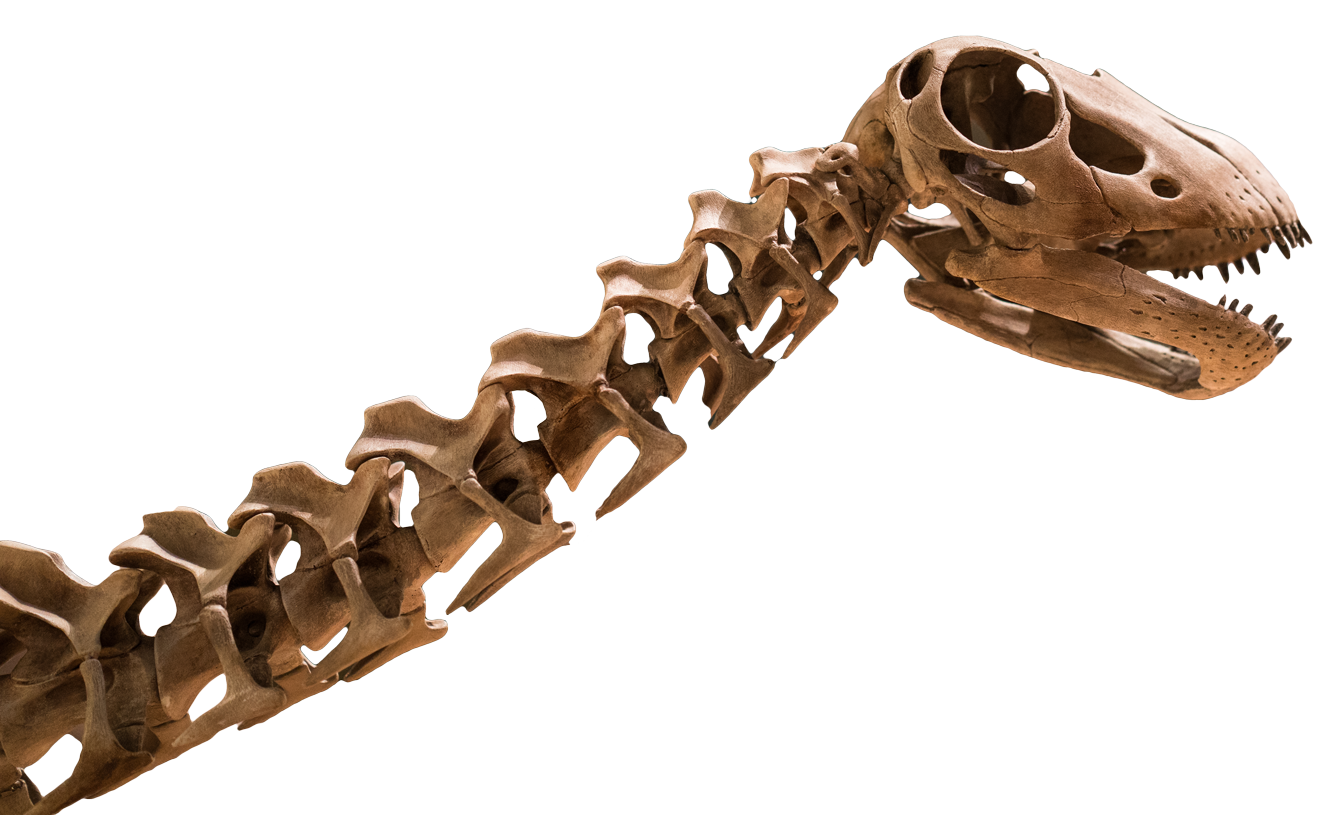
| Official Name: Keyes Meteorite |
| Synonym: Boise City Meteorite |
| Location: Cimarron County, Oklahoma, United States |
| Coordinates: 36° 43′ N/ 102° 30′ W |
| Find or Fall: Find (i.e., it was not an observed fall) |
| Date of Discovery: 1939 |
| Recovered Weight: 142 kg (312 lbs.) |
| Meteorite Group: L |
| Petrologic Type: 6 |
| Meteorite Type Name: Ordinary Chondrite (Stony Meteorite) |
| Estimated Impact (years before present): 11,500 |
| Other Notable Facts: 1 of 40 official meteorites from Oklahoma, United States |
History
The Keyes Meteorite was originally discovered in the summer of 1939 by a student of the University of Oklahoma when his plow hit the meteorite while disking his grandfather’s field to prepare for planting wheat. It was not until he was about 100 yards down the field that he realized that the hit made a metallic sound and that he might have hit a meteorite. As soon as he realized this, he stopped and walked back to investigate but could not find what the plow had struck. The next year while plowing, recalling the incident, he immediately stopped when he heard the metallic hit and discovered what he thought was a meteorite. It was apparently quite old, as it was broken and scattered by the many years plowing and it was in three large fragments (23 kg/50 lbs., 27 kg/60 lbs. and 68 kg/150 lbs.) and several smaller fragments (less than a fraction of an ounce each). The total weight of recovered fragments was 142 kg/312 lbs.
The student and his grandfather (who was a county agent in Cimarron County, Oklahoma) thought it was a meteorite, so on July 23, 1940, a fragment was brought to the Stovall Museum of Science and History (now the Sam Noble Museum) for confirmation of the meteorite identification via chemical and physical examination. Museum scientists confirmed it was indeed a meteorite that the student found.
Reassembly of all the large fragments and many of the smaller pieces was possible based on excellent fit of the pieces and continuity of surface features. The Keyes Meteorite was donated to the Stovall Museum of Science and History where C. A. Merritt and J. W. Stovall wrote the first technical history and scientifically acknowledged published description of it in December 1948 in the museum publication “The Museum of the University of Oklahoma Information Series Circular.”
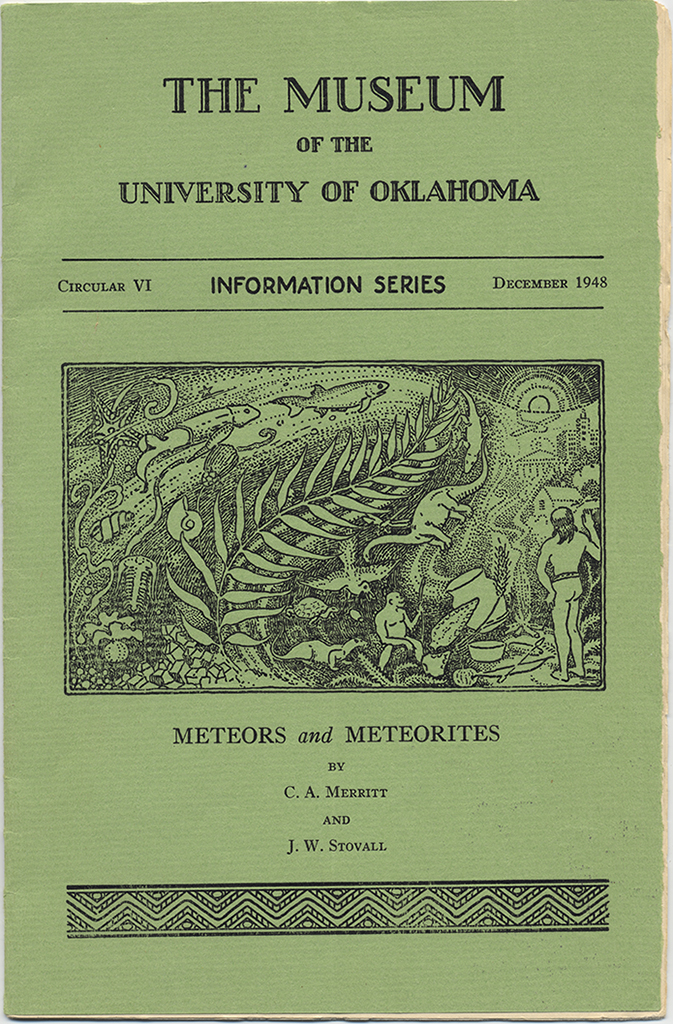
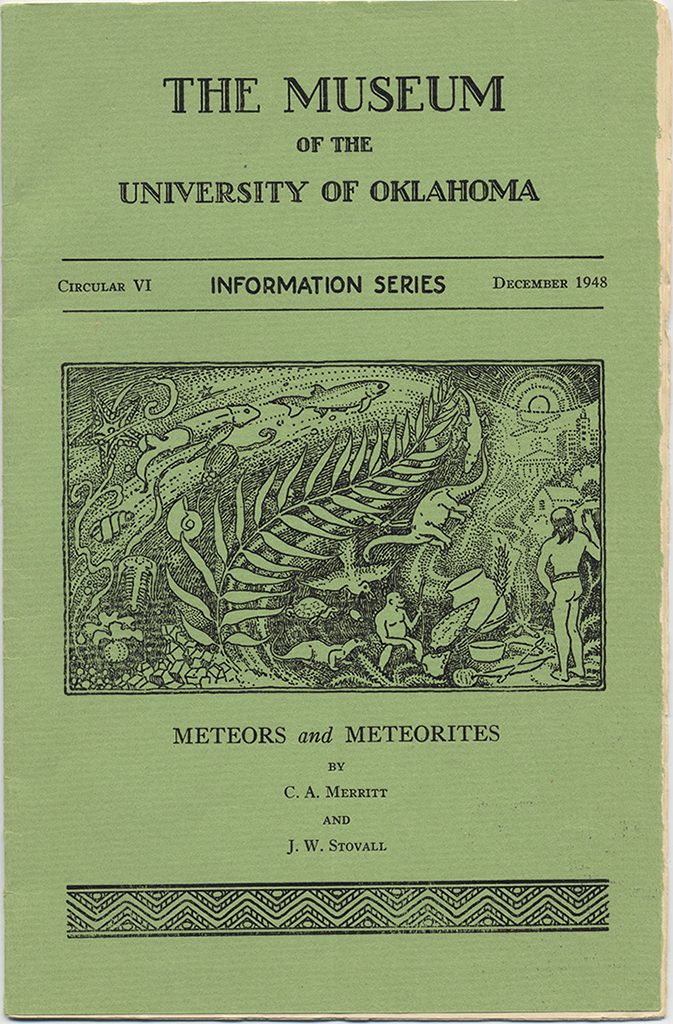
1st Scientific Publication about Keyes, 1948
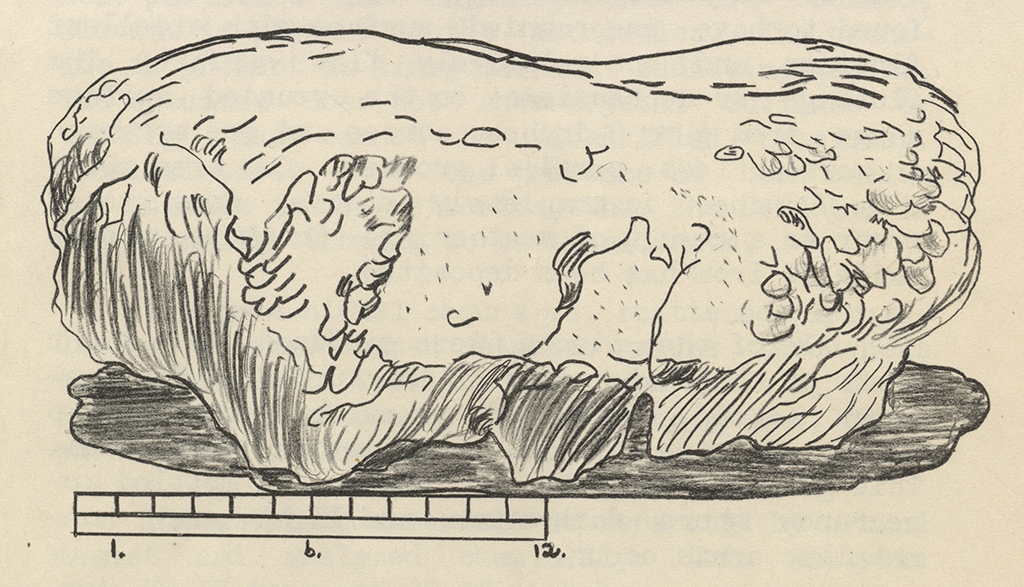
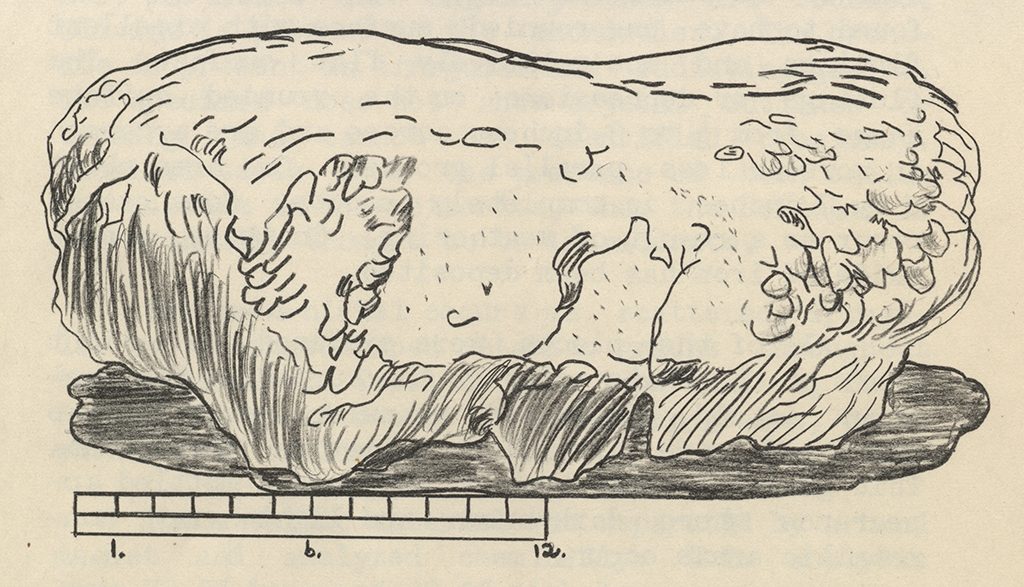
Keyes Meteorite OMC-100 - 1st Scaled Drawing, 1948
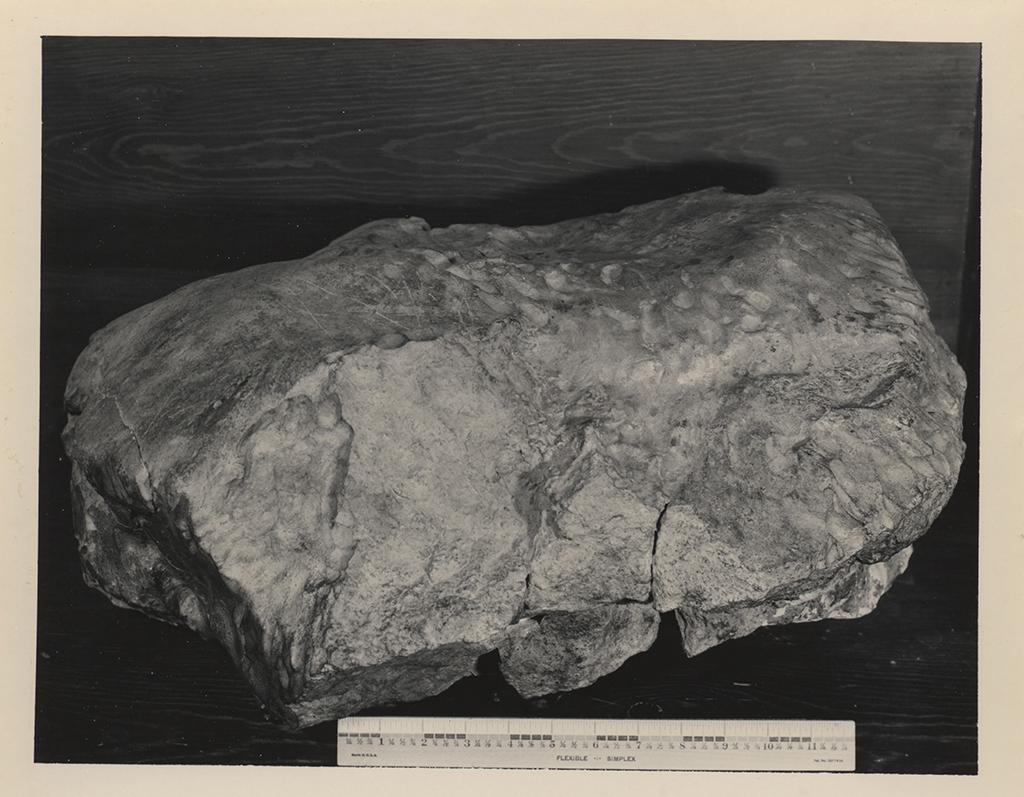
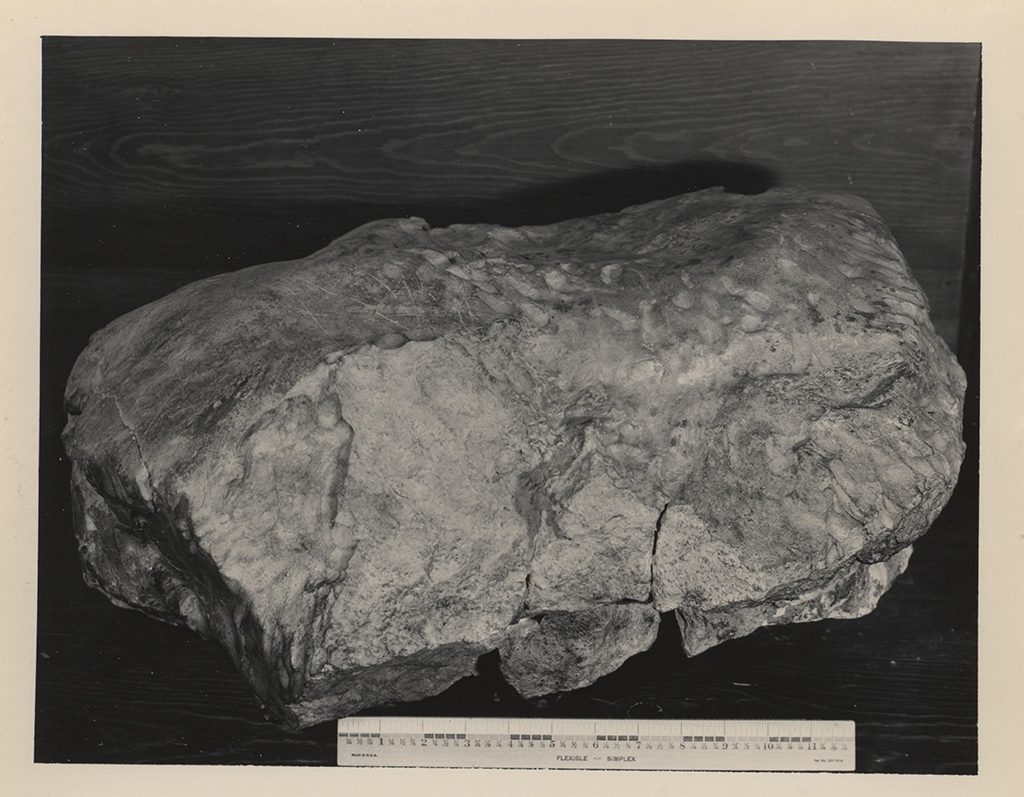
Keyes Meteorite OMC-100 - Assembled prior to coring
In the late 1960s NASA became interested in the meteorite, especially regarding comparing it with lunar rock samples and at their request the museum loaned the meteorite to NASA for study. Even though the museum told NASA about the meteorite having been in three pieces, they agreed that based on excellent fit and continuity of surface features that it is all one meteorite. In 1967, W. R. Van Schmus and J. A. Wood gave the Keyes Meteorite its official classification as an L6 chondrite. NASA scientists also wanted to measure noble gas production rates resulting from shielding effects in a large individual stone meteorite and the Keyes Meteorite gave them their first opportunity. To do this, they took three perpendicular cores that allowed not just NASA scientists but also future researchers the data needed to study the Keyes Meteorite and to compare it with lunar rock samples and other known meteorites. From September to December 1970 the Keyes was on display at NASA’s Lunar Receiving Laboratory at the NASA Manned Spacecraft Center (now the Lyndon B. Johnson Space Center) in Houston, Texas. NASA sent photographs of it on display to the Museum. Those photos were used to help develop a display for the Keyes Meteorite on its return to Norman, Oklahoma. (We hope to obtain the necessary permissions to share them here soon.)
In 1971, the Keyes was returned to Norman, Oklahoma. However, scientists were still analyzing the data even after the meteorite was back in Norman, Oklahoma so it was not until March of 1973 NASA scientists—R. J. Wright, L. A. Simms, M. A. Reynolds, and D. D. Bogard—published the first extensive scientific article on the Keyes Meteorite. Since that time numerous scientific papers have been written about samples from the Keyes Meteorite (see Publications section). A few less technical publications have also been written. For instance, in 1980, as meteorites are popular, our official museum newsletter then known as “The Stovall Museum Newsletter” once again featured the Keyes Meteorite.
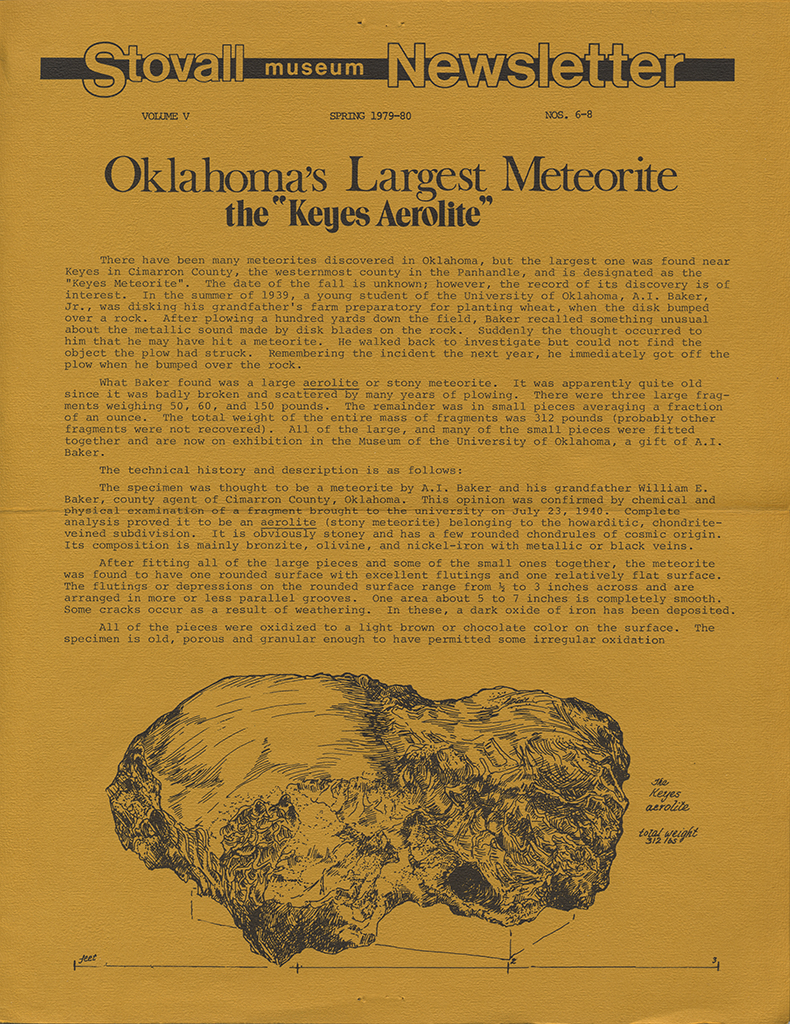
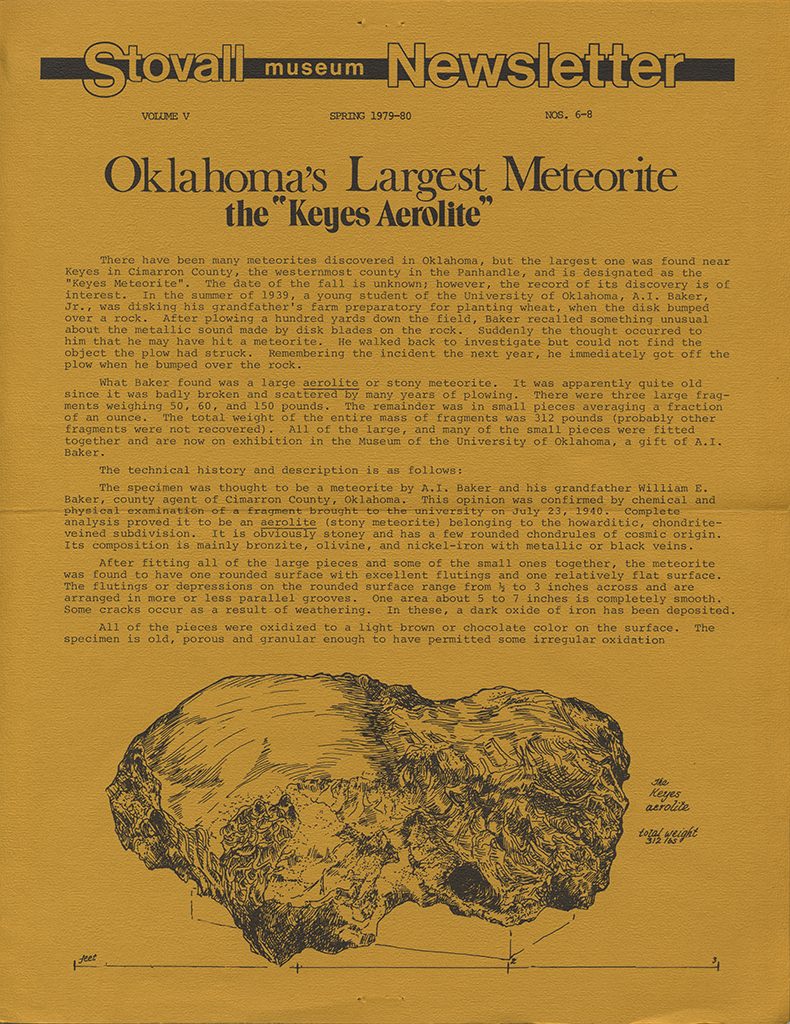
Museum Article about Keyes, 1980
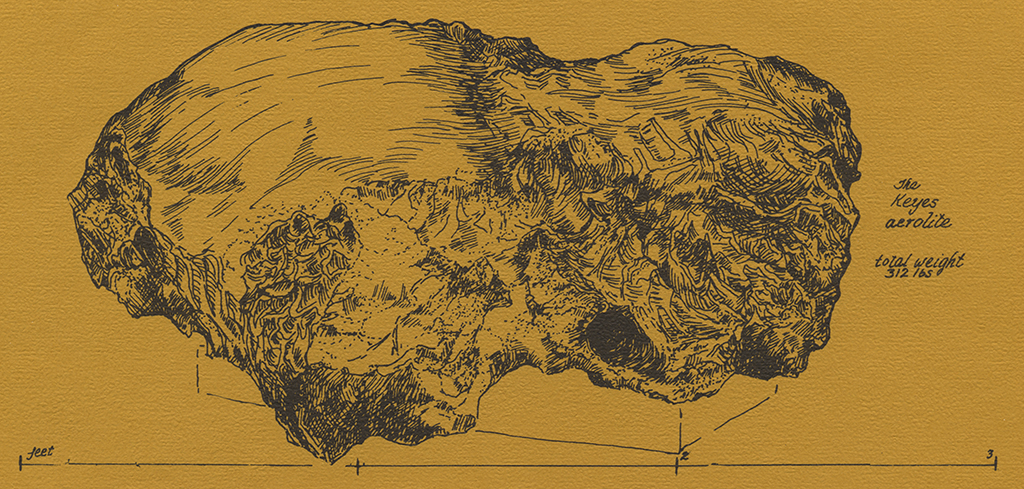
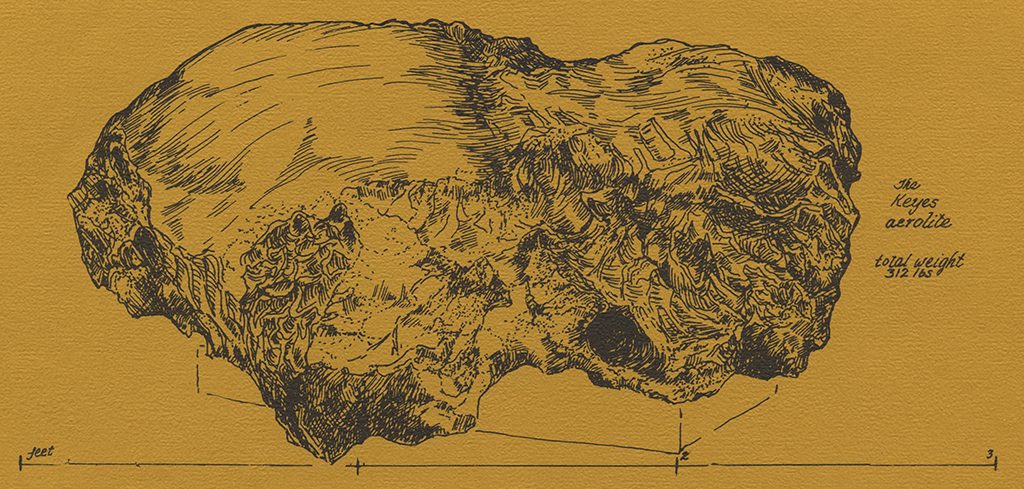
Keyes Meteorite OMC-100 - 1980 Scaled Drawing
Keyes on Display
The Keyes Meteorite was on display at the Stovall Museum for many years in the Paleontology Hall. The Keyes Meteorite remained on exhibit until it was uninstalled for the move to the new building on Chautauqua Avenue from the Portico. At the time of deinstallation, it was discovered that over the years various patrons had unfortunately shoved numerous things into the core holes including pencils, paper wads, buttons, and even a broken toy. Thankfully the numerous items that had been shoved into the core hole did not irreparably damage the meteorite.
Once we were in the new building on Chautauqua Avenue the Keyes Meteorite was initially on exhibit in the Hall of Ancient Life Cretaceous Gallery as part of the “Out With a Bang” display discussing the extinction event at the end of the Cretaceous. We learned our lesson and displayed it in a manner where items could not be shoved into the core holes. The Keyes Meteorite remained on exhibit until preparations were being made for the renovations and expanded displays in our Paleozoic Gallery. As we began the construction of the expanded Hall of Ancient Life, the Keyes Meteorite was deinstalled so it could be featured more prominently. However, the Keyes Meteorite is still represented in the Cretaceous Gallery where it was once mounted (see if you can recognize it when you visit).
When the Siegfried Family Hall of Ancient Life opened, the Keyes Meteorite was back on display welcoming visitors near the “Earth: Recycled Stardust” display which describes how the Earth and the Solar System formed. Currently only a replica of the Keyes Meteorite is on exhibit near the “Earth: Recycled Stardust” display and the actual Keyes Meteorite is off exhibit.
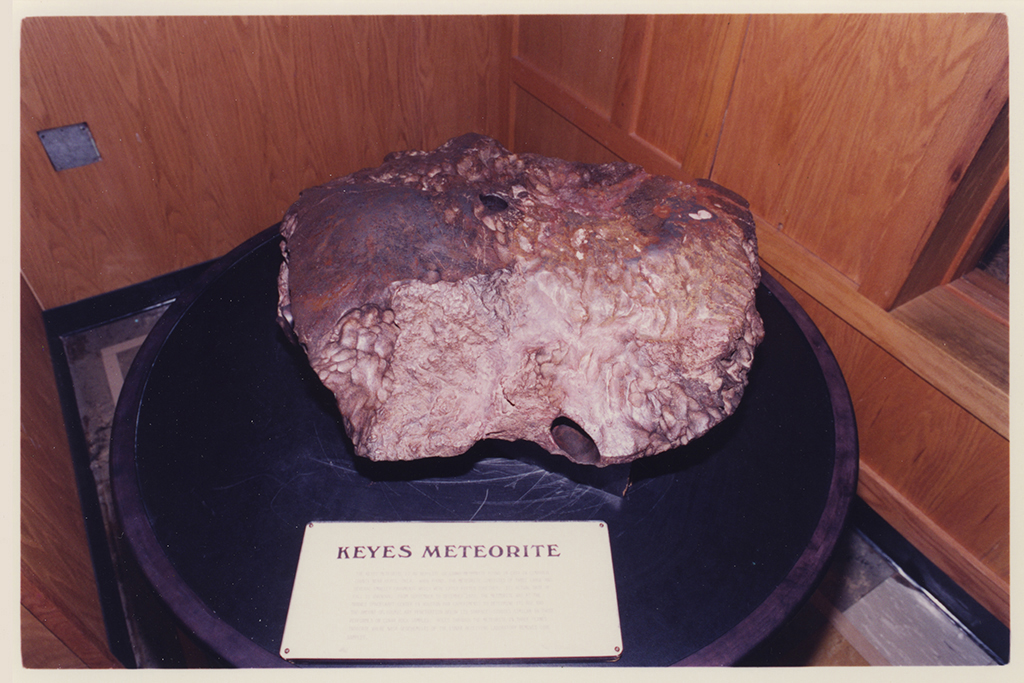
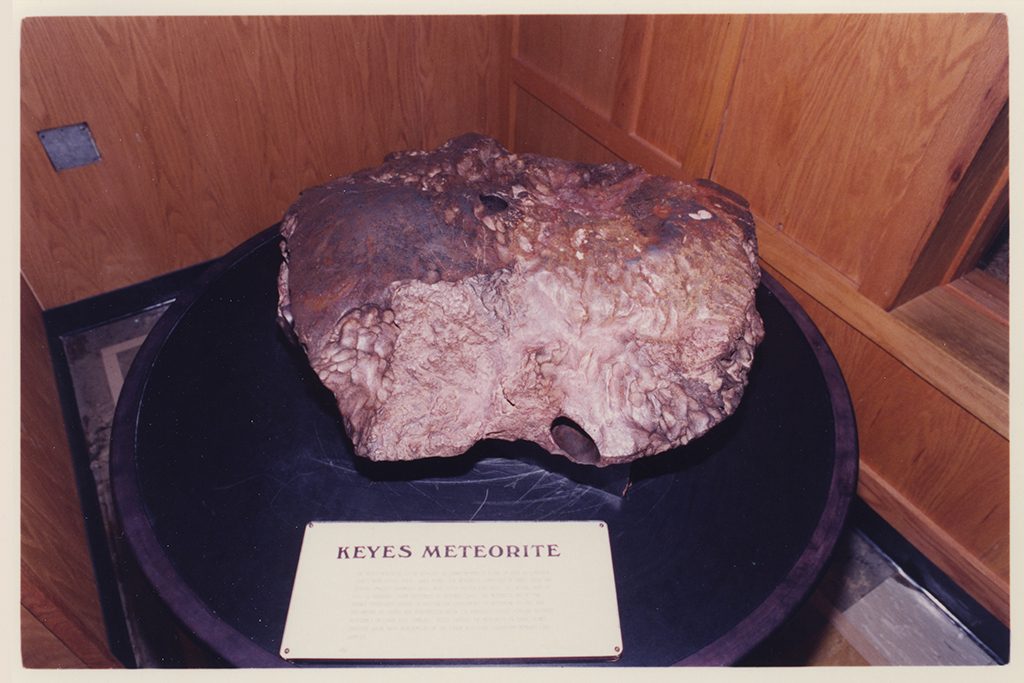
Keyes Meteorite OMC-100 - Gould Hall exhibit
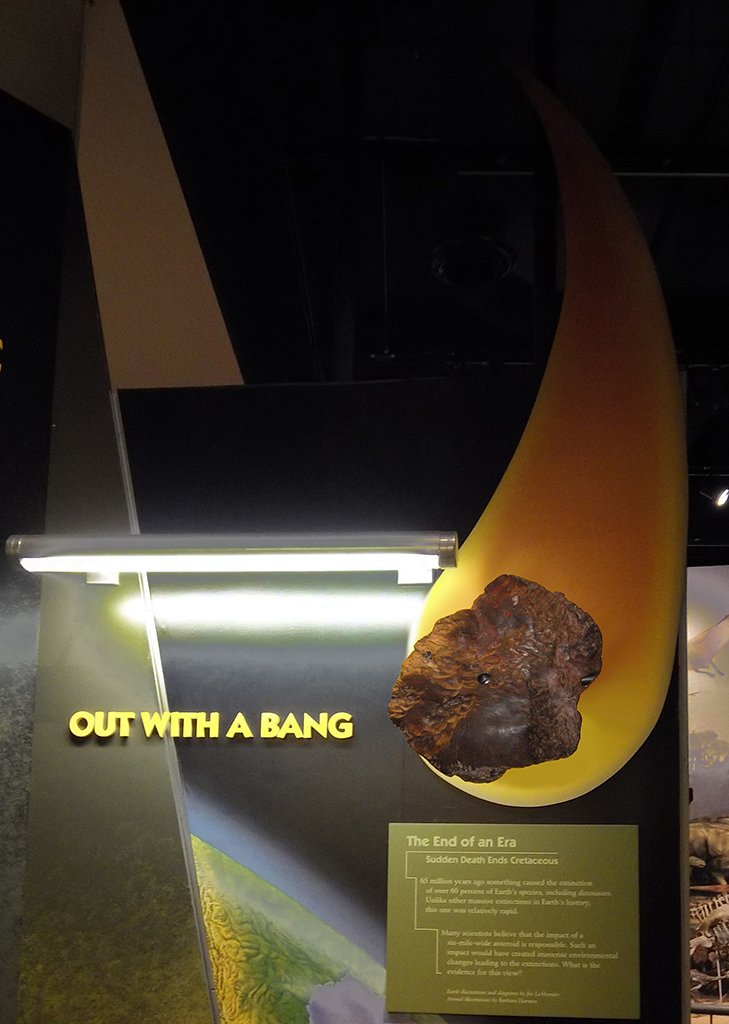
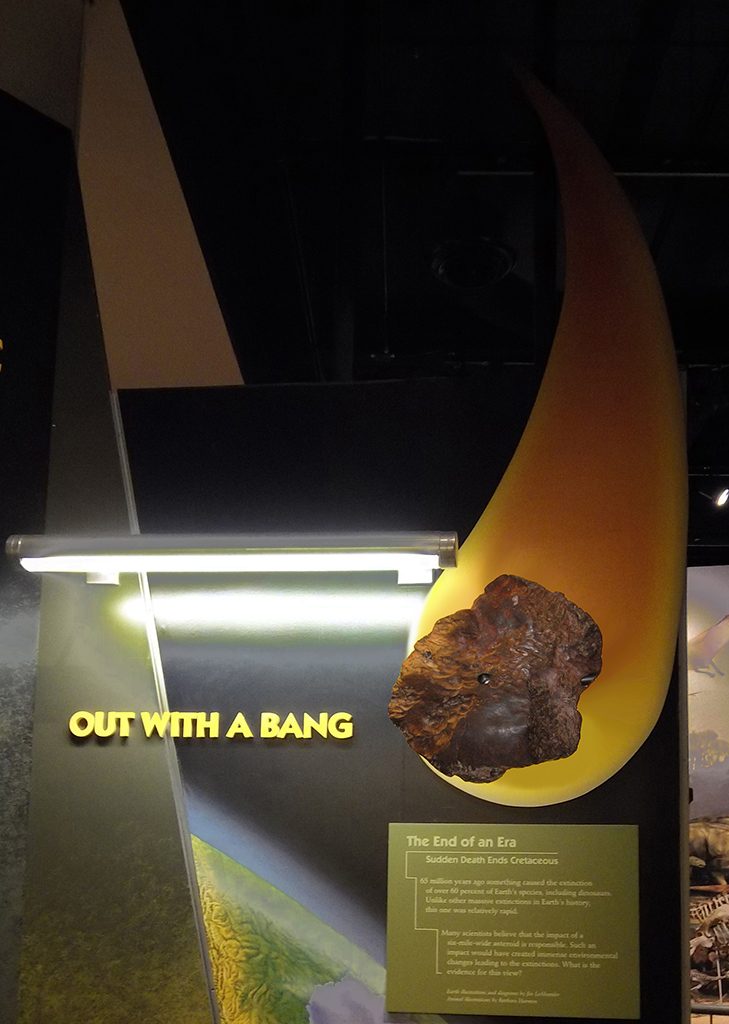
Keyes Meteorite OMC-100 - Out With A Bang exhibit
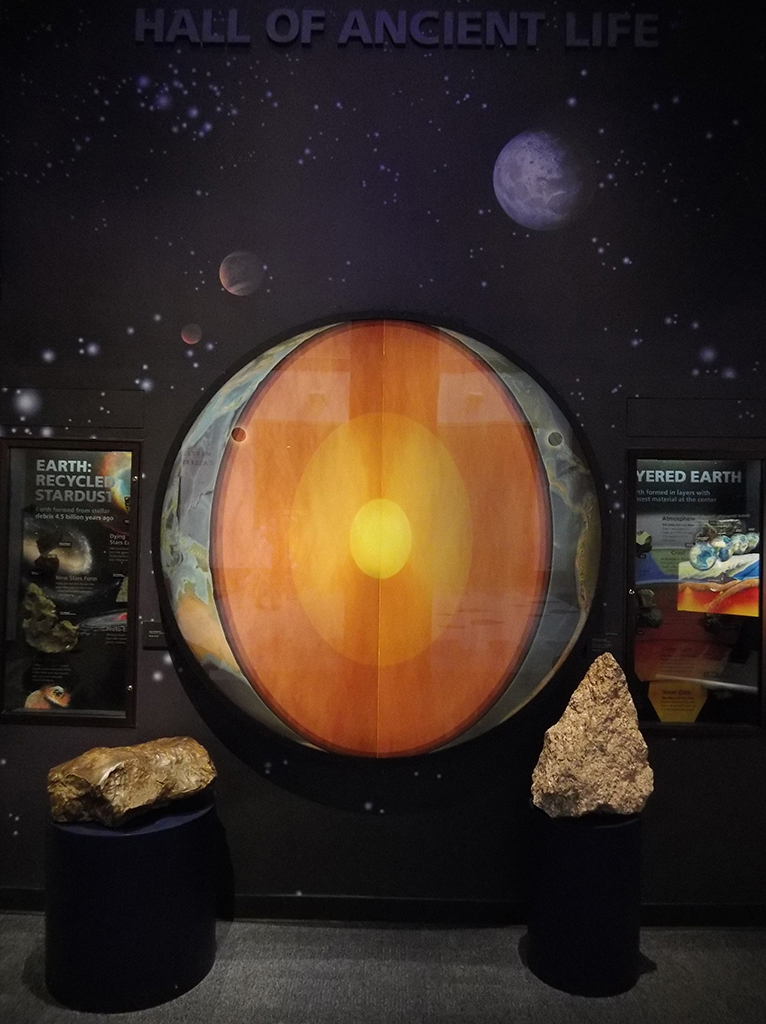
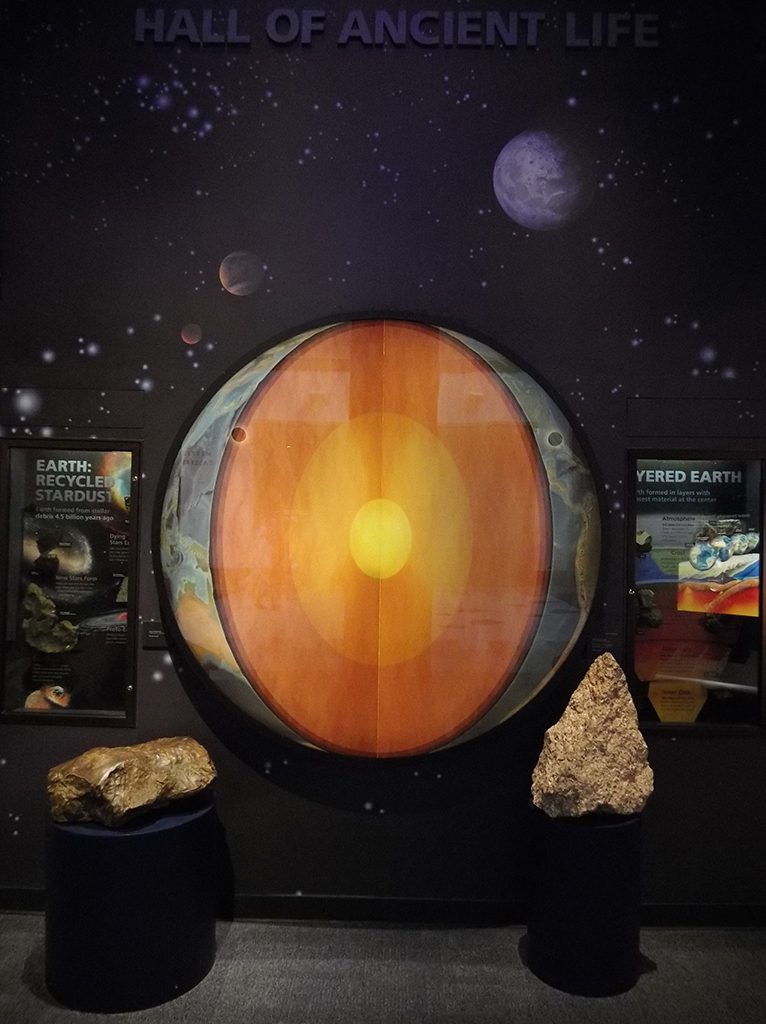
Keyes Meteorite OMC-100 - Hall of Ancient Life
Technical Description (from previous museum publications)
The opinion that this specimen was a meteorite was confirmed by chemical and physical examination of a fragment brought to the University of Oklahoma on July 23, 1940. Complete analysis proved that the Keyes is an aerolite (stoney meteorite) belonging to the howarditic, chondrite-veined subdivision. It is obviously stoney and has a few rounded chondrules of cosmic origin. Its composition is mainly bronzite (more properly enstatite), olivine, and nickel-iron with metallic black veins.
After fitting, all the large pieces (23 kg/50 lbs., 27 kg/60 lbs. and 68 kg/150 lbs.) and some of the small pieces (less than an ounce each) together, the meteorite was found to have a rounded surface with excellent flutings and one relatively flat surface. The flutings or depressions (or regmaglypts) on the rounded surface range from 0.5 inches to 3 inches across and are arranged in more or less parallel groves. One area about 5 to 7 inches is completely smooth. Some cracks occur because of weathering. In these, a dark oxide of iron has been deposited.
All the pieces were oxidized to a light brown or chocolate color on the surface. The specimen is old, porous and granular enough to have permitted some irregular oxidation throughout. This gives freshly broken surfaces a mottled appearance where dark brown and light gray, nonmetallic areas occur.
Polished surfaces reveal metallic specks of nickel-iron. Etching with acid did not reveal any special structures. The minerals present in the meteorite were identified from a study of thin sections, aided by qualitative chemical tests.
A Rosiwal analysis of a thin section gave the following mineralogical composition:
| bronzite (more properly enstatite) | 54.0% |
| olivine | 14.0% |
| feldspar, probably labradorite | 12% |
| iron-nickel | 15% |
| troilite | 5.0% |
| 100% | |
| specific gravity | 3.44 |
Technical Description (summarized from scientific publications)
A summarized technical description of the Keyes Meteorite derived from published scientific publications is forthcoming after additional publications listed below in the section on publications about the Keyes Meteorite are located.
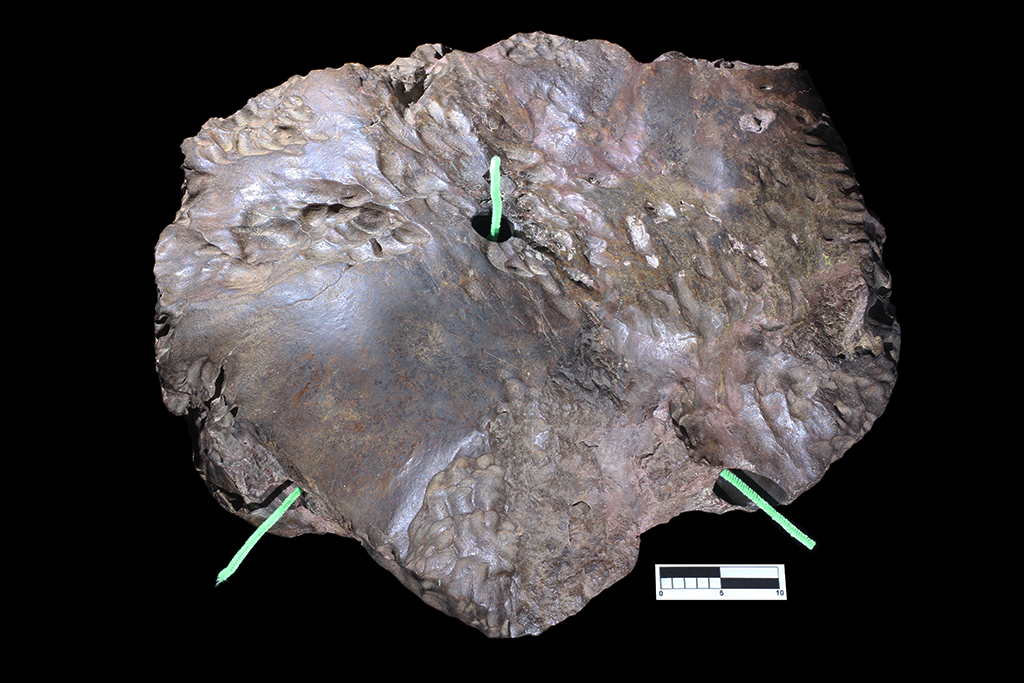
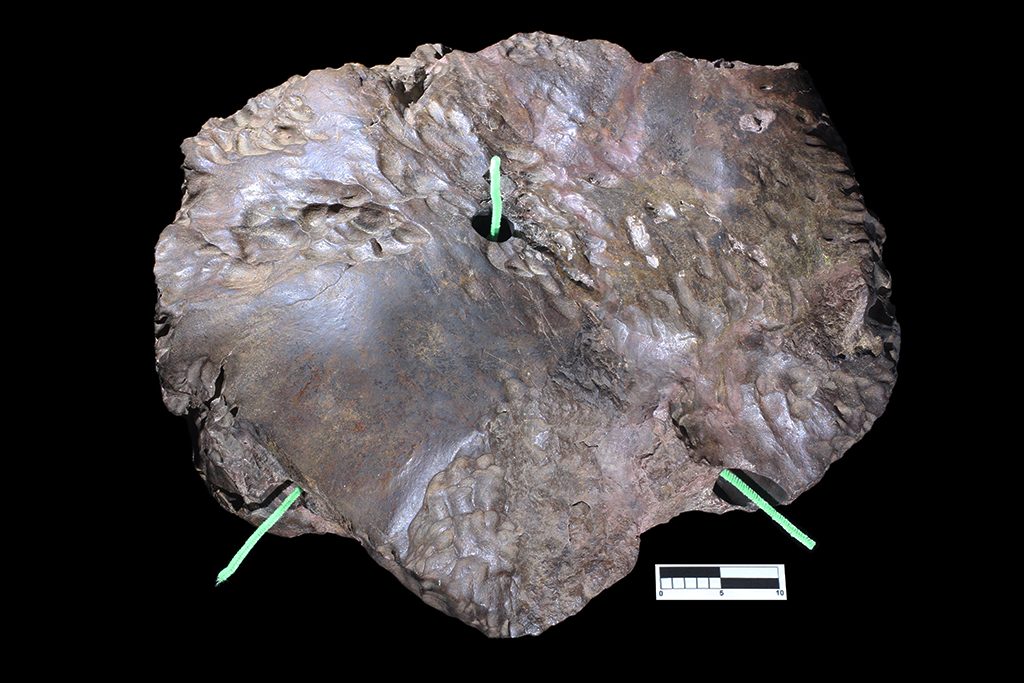
Keyes Meteorite OMC-100 - 3 Perpendicular Cores
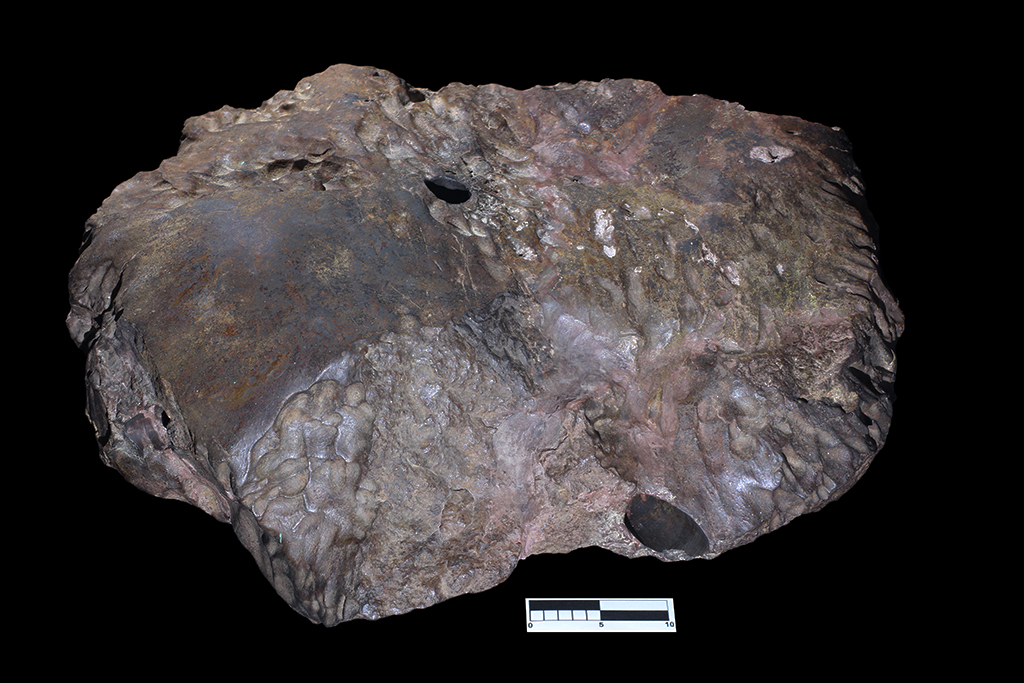
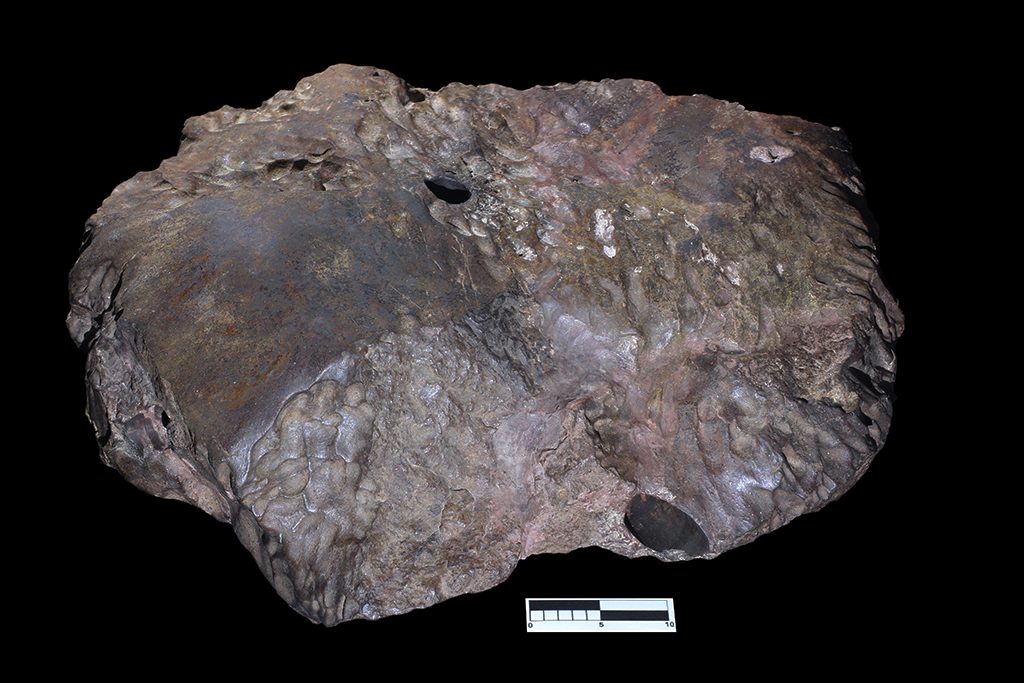
Keyes Meteorite OMC-100 - Front side
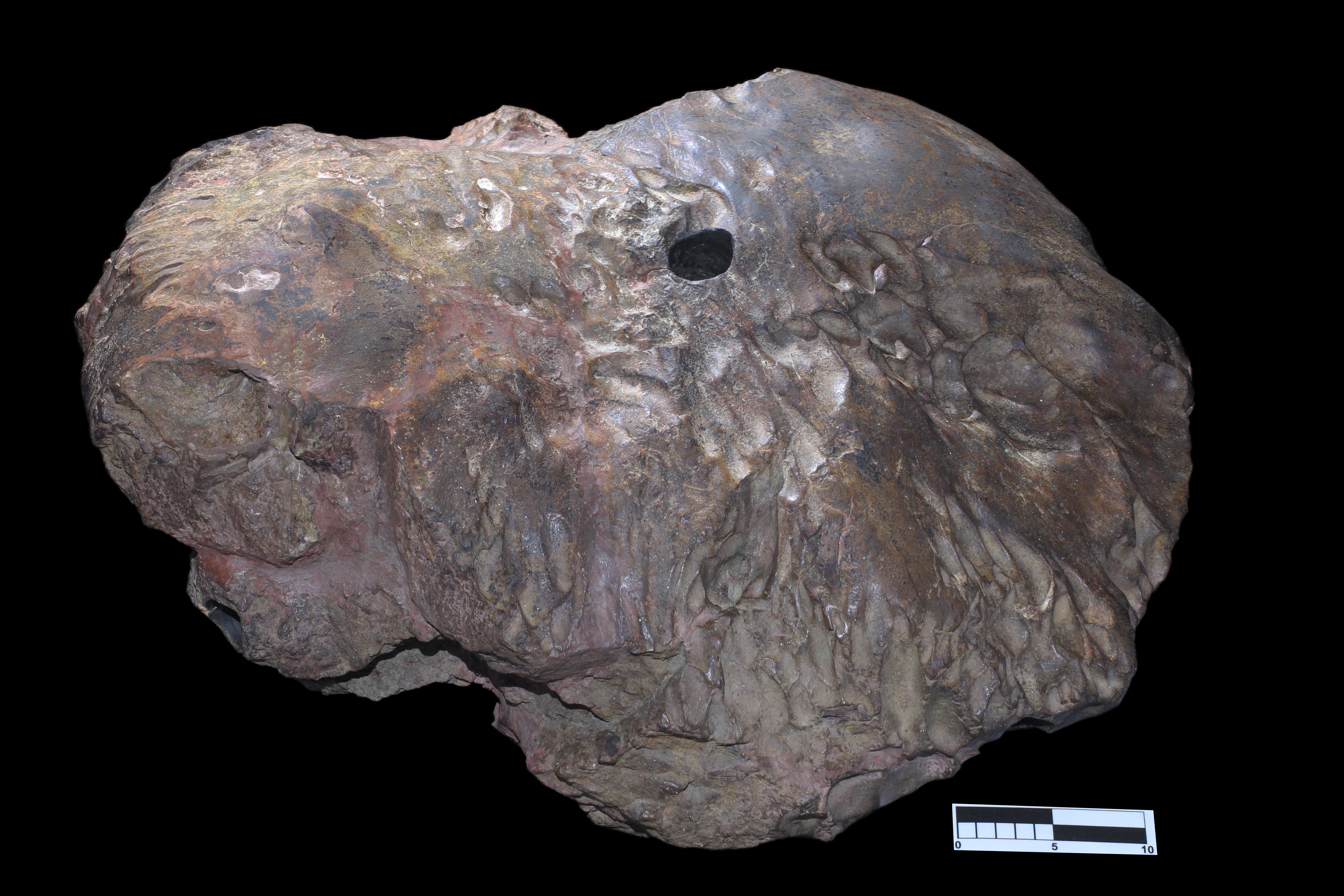
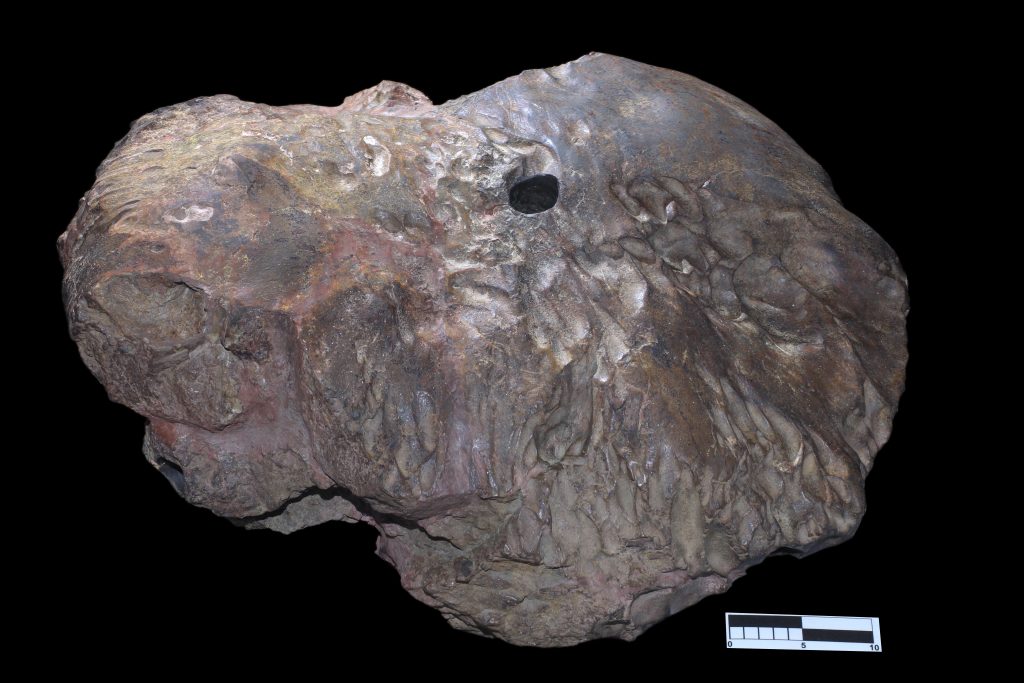
Keyes Meteorite OMC-100 - Back side
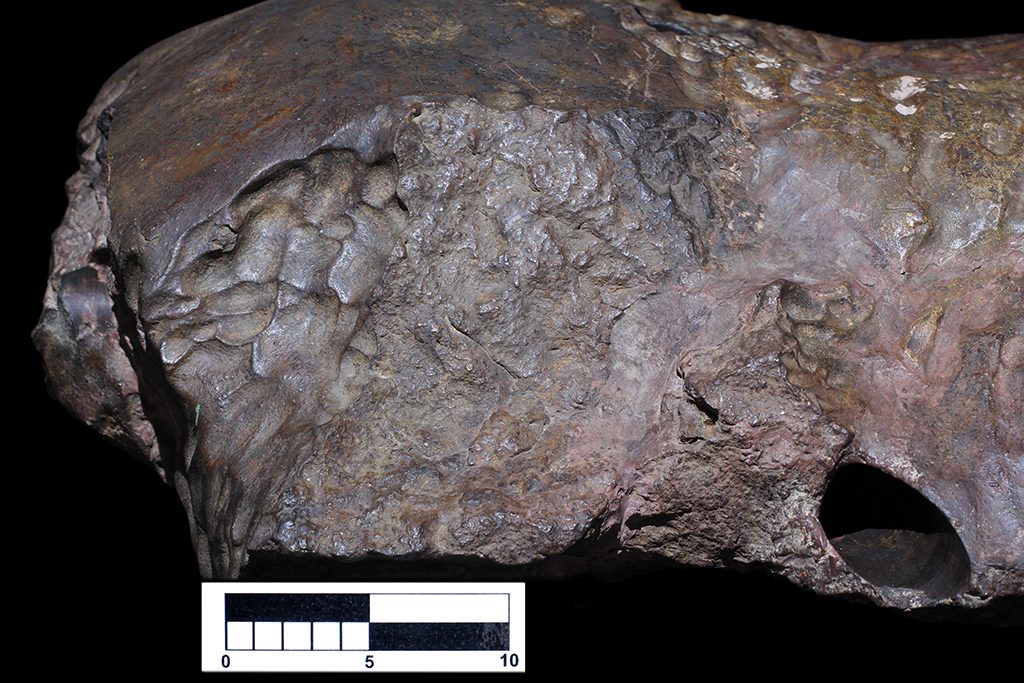
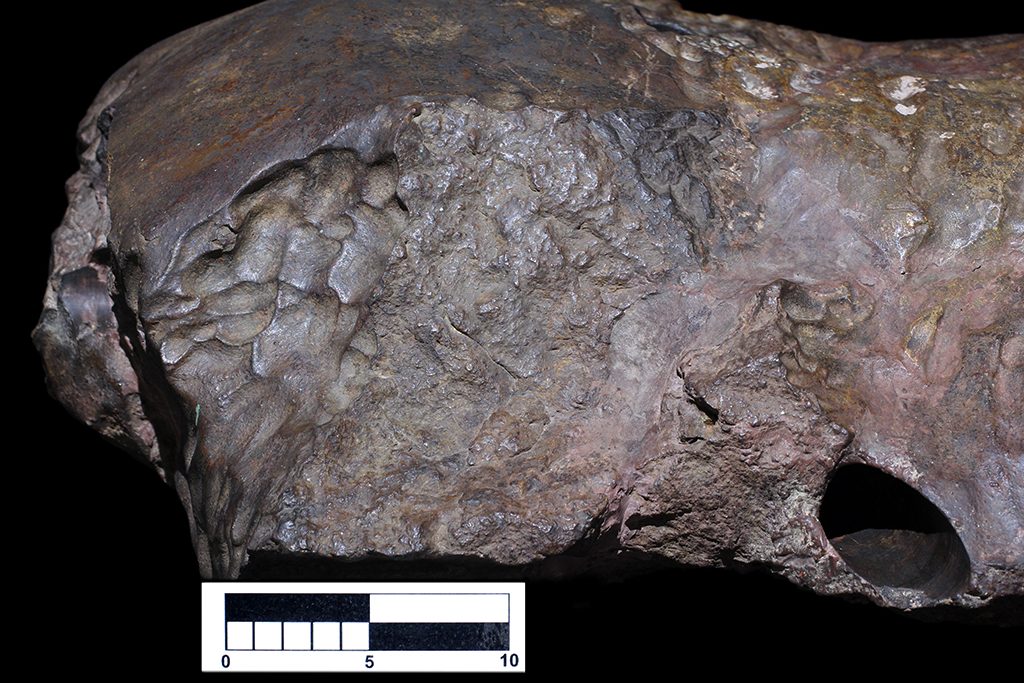
Keyes Meteorite OMC-100 - Close-up of regmaglypts
Publications (in order of publication)
Merritt, C. A. and Stovall, John Willis, 1948. Meteors and Meteorites. The Museum of the University of Oklahoma Information Series, no. 6. p. 1-13. [SNOMNH _Pbot-00000148]
Nininger, H. H. and Nininger, A. D., 1950. [publication on meteorites/when found as reported by Catalogue of Meteorites 4th and 5th editions, actual publication being located to gather remaining bibliographic data]
Mason, B. 1963. [publication describing mineralogy, olivine FA23 as reported by Catalogue of Meteorites 4th and 5th editions, actual publication being located to gather remaining bibliographic data]
Wright, R. J., Simms, L. A., Reynolds, M. A., and Bogard, D. D., 1973. Depth variation of cosmogenic noble gases in the ~120-kg Keyes chondrite: Journal of Geophysical Research, v. 78, no. 8, p. 1308-1318. doi: 10.1029/JB078i008p01308 [SNOMNH _Pbot-00000200]
Lorin, J, C. and Poupeau, G., 1973. [publication on cosmic ray exposure age, 18.5 Ma as reported by Catalogue of Meteorites 4th and 5th editions, actual publication being located to gather remaining bibliographic data]
Schultz, L. and Kruse, H., 1989 [publication on Noble gas data compilation as reported by Catalogue of Meteorites 4th and 5th editions, actual publication being located to gather remaining bibliographic data]
Jordon, Julia A., 1980. Oklahoma’s Largest Meteorite the “Keyes Aerolite.” Stovall Museum Newsletter, v. 5, no. 6-8, p. 1-2. [SNOMNH _Pbot-00000149]
Graham, A. L., Bevan, A. W., and Hutchison, R. 1985. Keyes, Catalogue of Meteorites: (4th ed.), University of Arizona Press, Tucson, Arizona, United States, p. 192. [SNOMNH_Pbot-00000252]
Graf, T., et. al., 1990. [publication on model for production of cosmogenic nuclides as reported by Catalogue of Meteorites 4th and 5th editions, actual publication being located to gather remaining bibliographic data]
Jull, A. J. T., et. al., 1993. [publication on 14C age as reported by Catalogue of Meteorites 4th and 5th editions, actual publication being located to gather remaining bibliographic data]
Benoit, P. H., et. al., 1993 [publication on natural thermoluminescence and relationship with 14C ages as reported by Catalogue of Meteorites 5th ed., actual publication being located to gather remaining bibliographic data]
Grady, Monica Mary, 2000. Keyes, Catalogue of Meteorites: (5th ed.), Cambridge University Press, Cambridge, United Kingdom, p. 273. [SNOMNH_Pbot-00000253]
Other Notable Information
Our museum has most of the Keyes Meteorite but other collections/museums have portions of it. Known other portions are at the following collections (listed in order of size/weight of the portion/specimen they have):
- Smithsonian, Washington, D. C. (USNM) has multiple fragments of the Keyes Meteorite totaling 1.7 kg (1694: 38 g, 1384 A: 947.4 g, 1384 B:498.48 g)
- The Field Museum, Chicago, Illinois (FMNH) has multiple fragments of the Keyes Meteorite including one that was originally was part of James M. DuPont Meteorite Collection totaling approximately 856.5 g (in 2012 Field Museum Meteorite Catalog ME 2375 1: 9 g, ME 2415 1: 304.4 g, ME 2415 3: 6.2 g, 5375: 195.038 g; per 1985 Catalogue of Meteorites 4th ed. & 2000 Catalogue of Meteorites 5th ed. 667 g and per 2000 Catalogue of Meteorites 5th ed. 76 g James M. DuPont Meteorite Collection additionally should now be at The Field Museum as they acquired the James M. DuPont Meteorite Collection after 2000)
- Natural History Museum, London, United Kingdom (NHMUK) has 342 g fragment of Keyes Meteorite (H. H. Nininger Collection had a fragment may have been transferred here)
- The Monnig Meteorite Collection and Gallery at Texas Christian University, Fort Worth, Texas (MTCU) has 174.7 g fragment of the Keyes Meteorite (In 1985 per Catalogue of Meteorites 4th ed. had 483 g; In 2000 per Catalogue of Meteorites 5th ed. had 390 g; website now only lists having 174.7 g)
- Arizona State University’s Center for Meteorite Studies, Tempe, Arizona (ASUC) has 58.7 g fragment of Keyes Meteorite (H. H. Nininger Collection had a fragment may have been transferred here; per Catalogue of Meteorites 5th had 59 g)
- Max Planck Institute, Mainz, Germany (MPI) has 190 g fragment of Keyes Meteorite per Catalogue of Meteorites 5th ed.
- American Museum of Natural History, New York City, New York (AMNH) has 36 g fragment of Keyes Meteorite per Catalogue of Meteorites 5th ed.
- National Meteorite Repository of India in Geological Survey of India, Calcutta, India (GSI) has 18 g fragment of Keyes Meteorite per Catalogue of Meteorites 5th ed.

